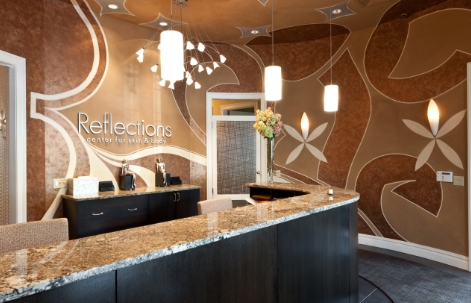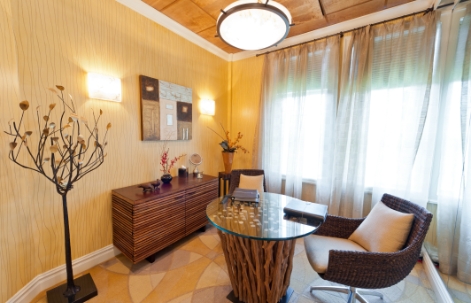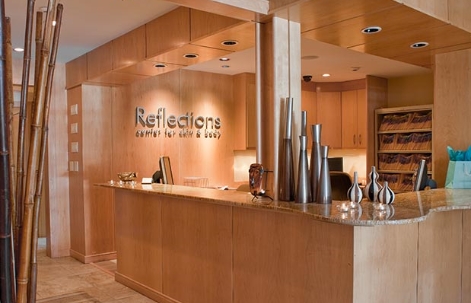Acne can be frustrating – and that’s without the aftereffects impacting your skin for months or even years afterward. Acne scars are one of the toughest and most common skin concerns we see here at Reflections Center for Cosmetic Medicine, but “acne scars” is a widespread term that covers many different things. Not all acne scars are alike and each type requires a targeted approach by one of our cosmetic physicians. Here’s what to know about the five main types of acne scars treatable at our Bridgewater and Livingston, NJ locations.
What Type of Acne Causes Scarring?
Different types of acne are generally responsible for different types of scarring. We can break them down as follows:
- Mild: Mild acne usually includes a few whiteheads or blackheads and accompanying red bumps or pustules. There’s very little irritation.
- Moderate: Moderate acne causes pus-filled pimples and red bumps with some irritation and sensitivity.
- Severe: Severe acne (or cystic acne) can lead to painful cysts underneath the skin. These typically cause significant irritation and sensitivity.
Both mild and moderate acne are likely to heal without causing permanent scarring – in the worst case, it may leave light red or brown spots that fade on their own over time. Severe acne, on the other hand, is much more likely to leave noticeable, permanent scarring, especially if you irritate it by picking or squeezing.
Keep in mind that acne scars aren’t always caused by acne. Some scars can be the result of viruses like chickenpox or varicella, which causes blisters that can damage the skin. Scars caused by viruses can still be treated the same as acne scars – however, the types of scars we’ll discuss are most often the result of severe, cystic acne.
5 Types of Acne Scars and Their Treatment
The type of acne scar will determine the course of your treatment with our cosmetic physicians. Here’s what to know about the five most common types of acne scars and what to know about them.
Atrophic Scars
Atrophic scars are depressions or shallow areas in the skin. They’re a result of not enough collagen being generated to repair the acne wound. They’re often treated in two stages – the first involves “filling in” the scar, either by exfoliating the skin around it or adding volume underneath it (or both). The best options for exfoliation typically include chemical peels or laser peels to uncover healthy new skin and prompt new growth. Adding volume can be done in a few ways – one way is to use fillers to lift the skin underneath it and reduce the appearance of depressions. Another way is to prompt new collagen growth through microneedling (this has the additional benefit of breaking down any scar tissue).
The second stage involves reducing pigmentation if any is present. This can be done through a combination of peels (chemical or laser) and incorporating the right skincare products into your regimen.
Boxcar Scars
Boxcar scars are depressions in the skin that have a clearly defined edge and are shaped like a box – they may overlap. They tend to occur in areas of thicker skin like the lower cheeks and jawline. They can be somewhat broad and large.
Ice Pick Scars
These scars are smaller, narrower, and deeper depressions that point downward into the skin (like a gouge created from an ice pick). They tend to occur on the cheeks and can be one of the most difficult types of acne scars to treat.
Rolling Scars
Rolling scars can simply look like rough, bumpy, wavy skin. They have no well-defined edges and are typically the result of damage to the collagen fibers under the skin.
Hypertrophic and Keloid Scars
Hypertrophic scars are the opposite of atrophic scars – they are bumps that rise above the surface of the skin. They’re the result of too much collagen as acne heals. A similar type of scar is keloids which grow larger than the acne that caused them in the first place. Treatment for these types of scars can be more aggressive – surgical removal might be needed, but in the case of keloids, can come with risks. Steroid injections or certain types of laser therapy are the most recommended options – keep in mind that selecting a knowledgeable cosmetic physician is key to ensuring regrowth doesn’t occur.
In either case, these types of scars are more likely to occur on areas like the shoulders, chest, and back, as well as the jawline.
Hypertrophic Scars
Hypertrophic scars are bumps of scar tissue that form and remain the same size as the acne that causes them. They can be pigmented and cause unwanted texture on the skin.
Keloid Scars
Keloids are more likely in patients who have darker skin tones. They can occur from any damage to the skin, not just acne. They grow much larger than the original wound.
Post-Inflammatory Hyperpigmentation
Hyperpigmentation occurs after the acne heals – it tends to leave behind a darker or discolored patch. Although not technically a scar, many people opt to treat it along with atrophic or hypertrophic scarring. Hyperpigmentation will often go away on its own with good skincare habits like sun protection and topical treatments like vitamin C or hydroquinone. Depending on the severity, chemical or laser peels can be the best way to reduce hyperpigmentation. However, you might benefit from prescription or over-the-counter retinols. In either case, daily SPF of 30+ is essential.
Acne Scar Treatment at Reflections Center for Cosmetic Medicine
Everyone experiences acne scars differently, and finding a knowledgeable cosmetic physician is the best way to get reliable treatment. To learn more about your options for acne scars, contact our offices for a free consultation using our online form.







